2021, documentation of the exhibition
Palais Rasumofsky Wien 21. 10. 2021 - 21. 12. 2021
photos © Jana Perusich
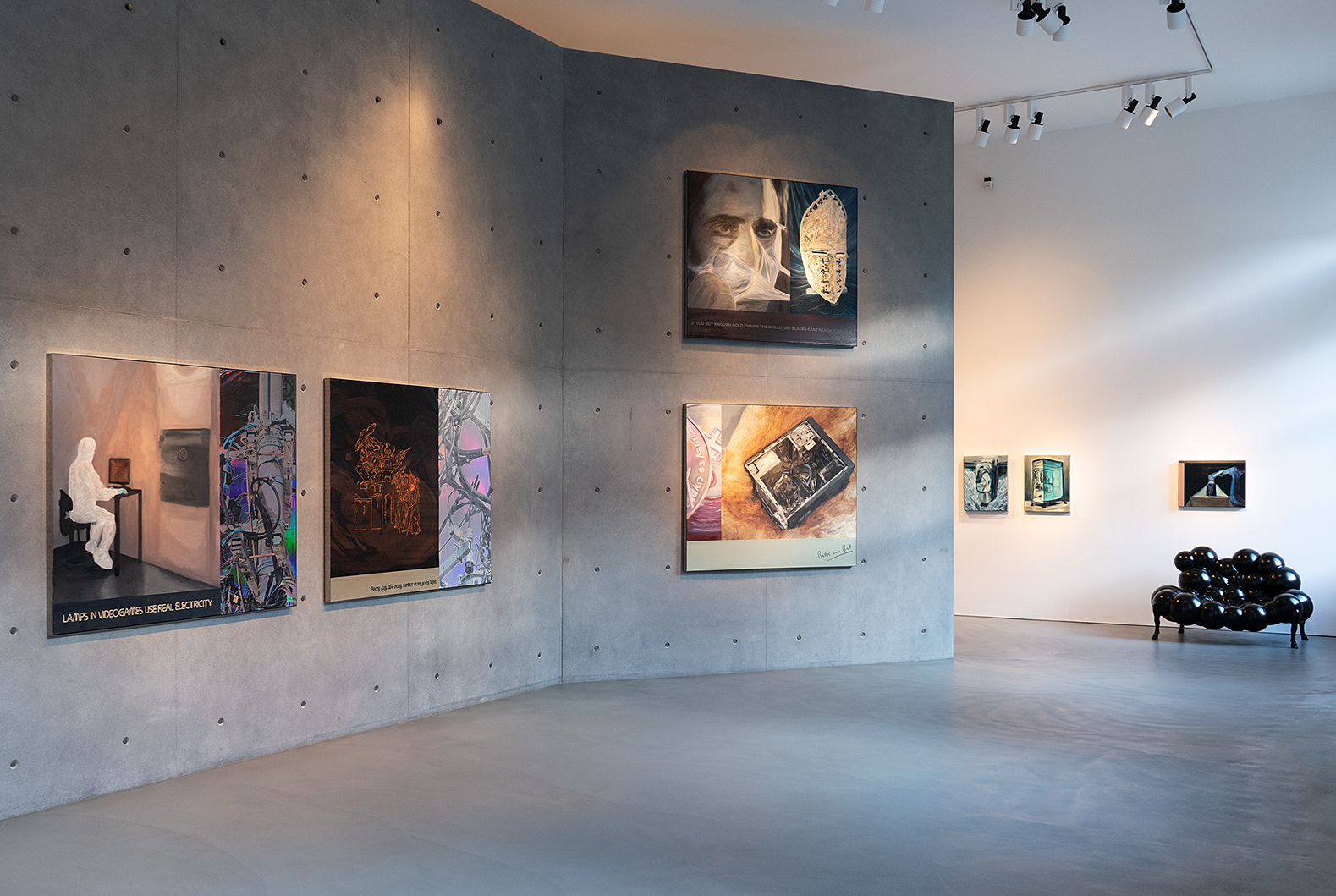
installation view „Wrong Answers Only“ - Palais Rasumofsky Vienna
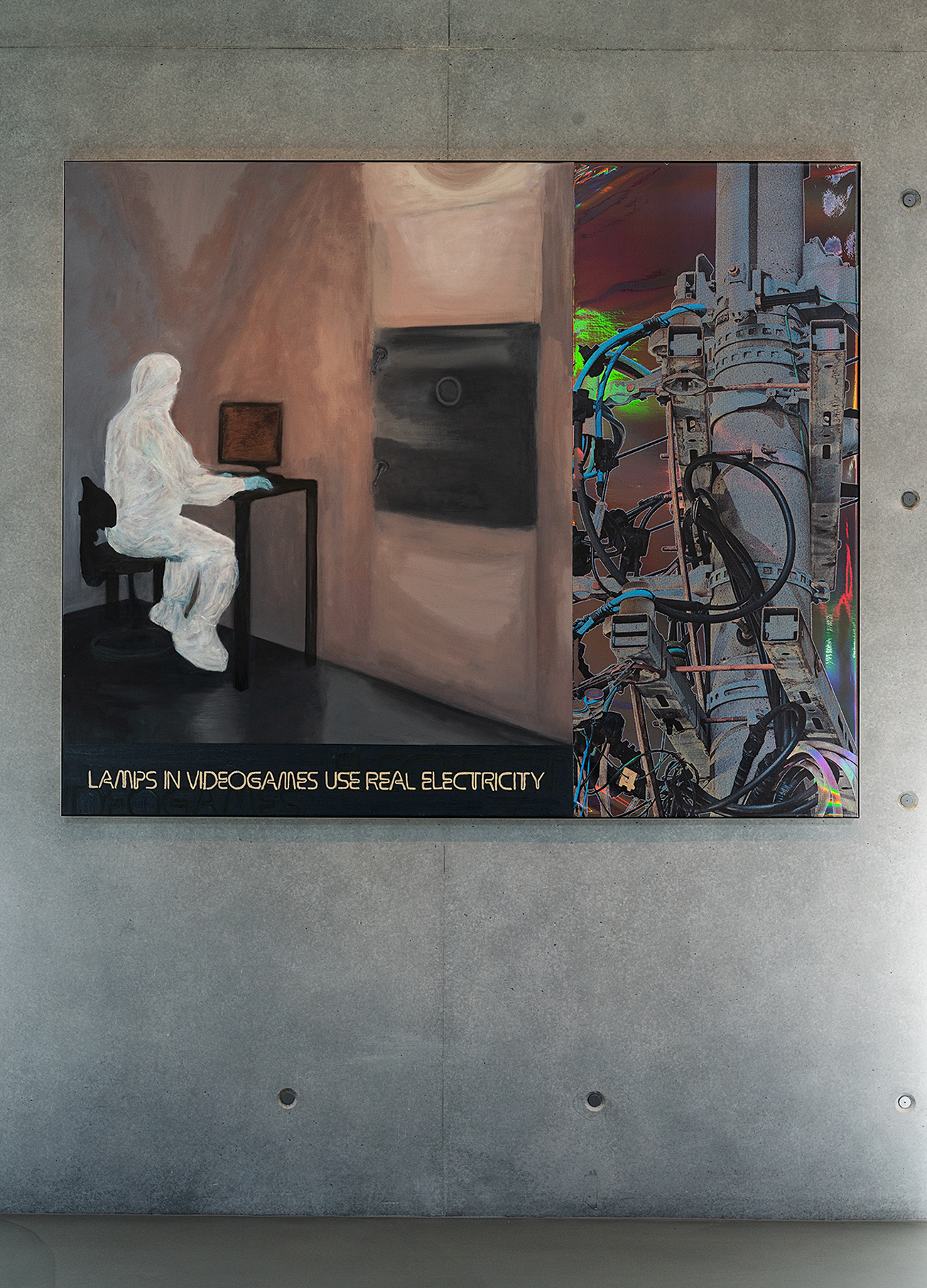
„Electricity“, 2021, oil on canvas, print on pvc, 140 x 170 cm

detail of “Electricity”

„Every Day“, 2021, oil on canvas, print on pvc, 140 x 170 cm
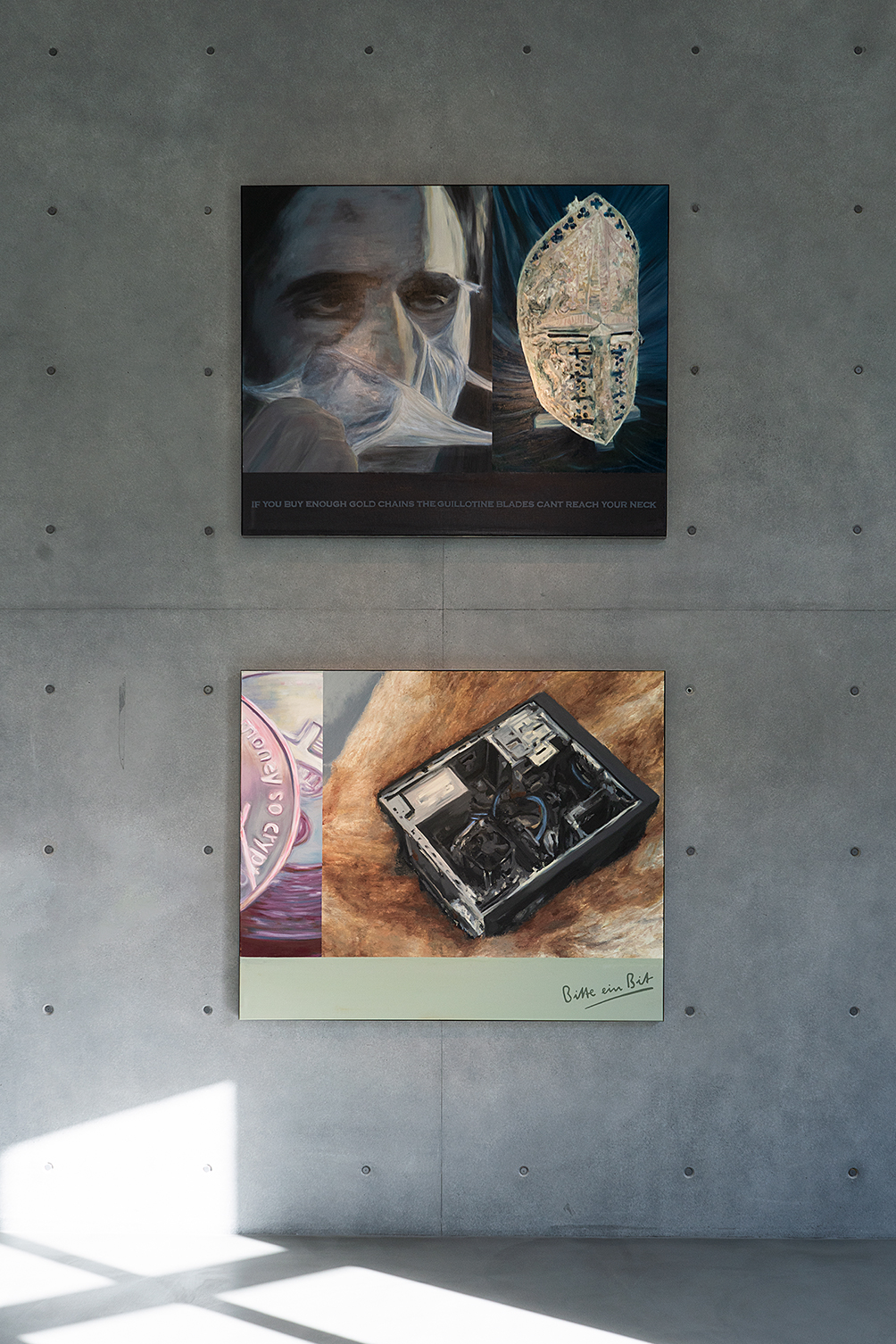
installation view „Wrong Answers Only“ - Palais Rasumofsky Vienna
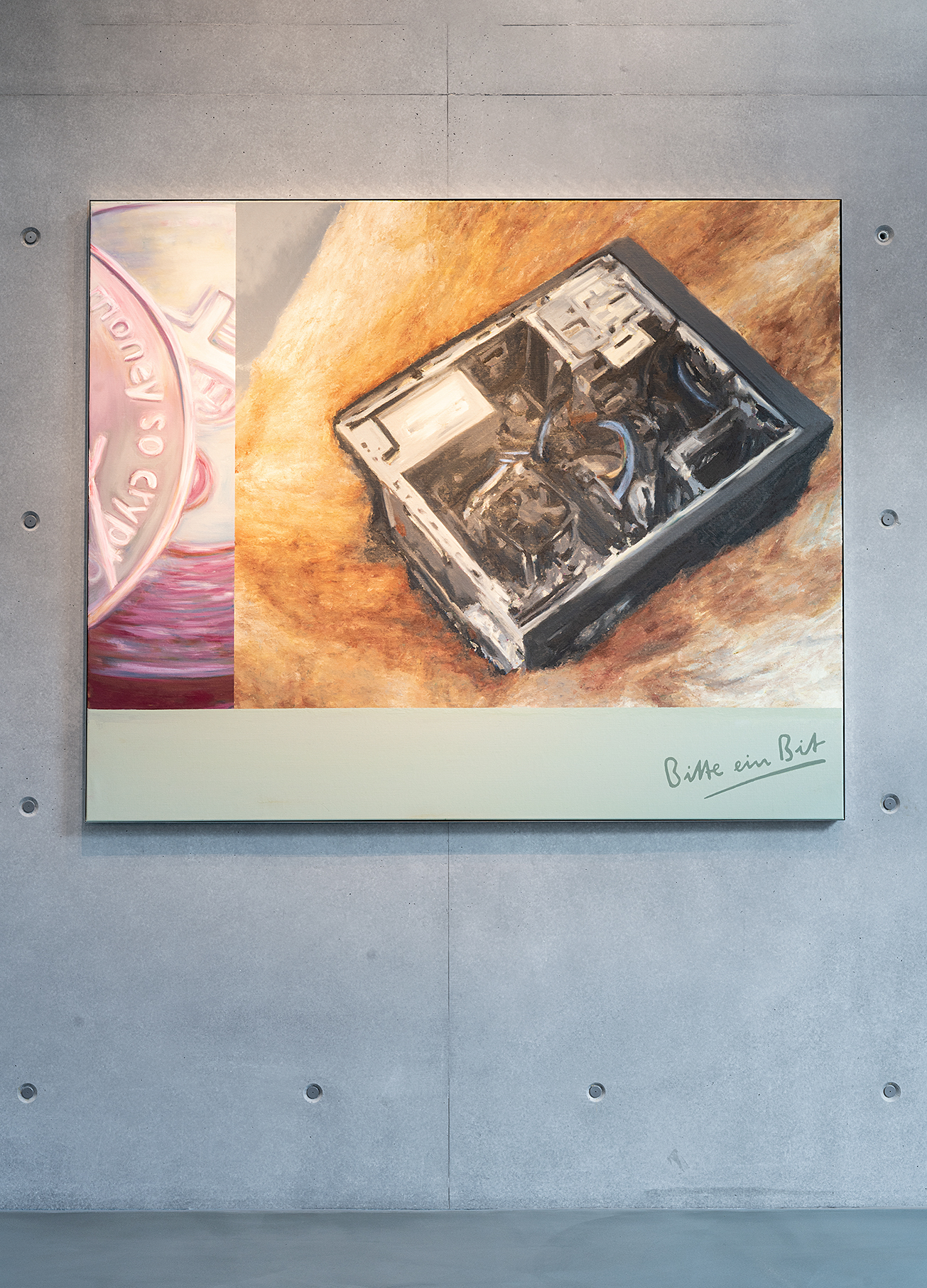
„Money So Crypto“, 2021, oil on canvas, 140 x 170 cm

„Psycho“, 2021, oil on canvas, 140 x 170 cm

installation view „Wrong Answers Only“ - Palais Rasumofsky Vienna
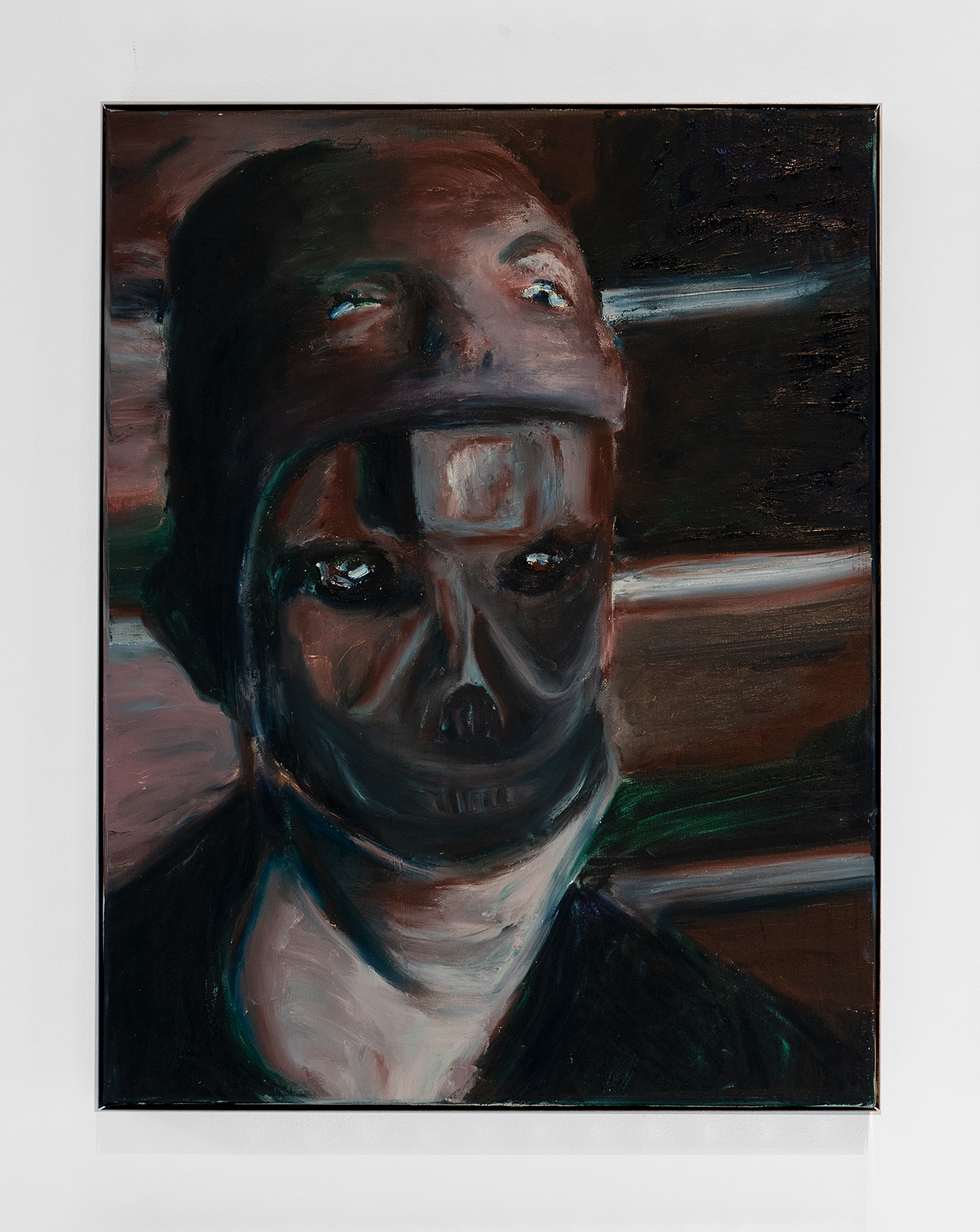
„Pandora’s Dropbox“, 2021, oil on canvas, 65 x 50 cm

„Flying
Saucer“, 2021, oil on canvas, 65 x 50 cm

detail of “Flying Saucer”
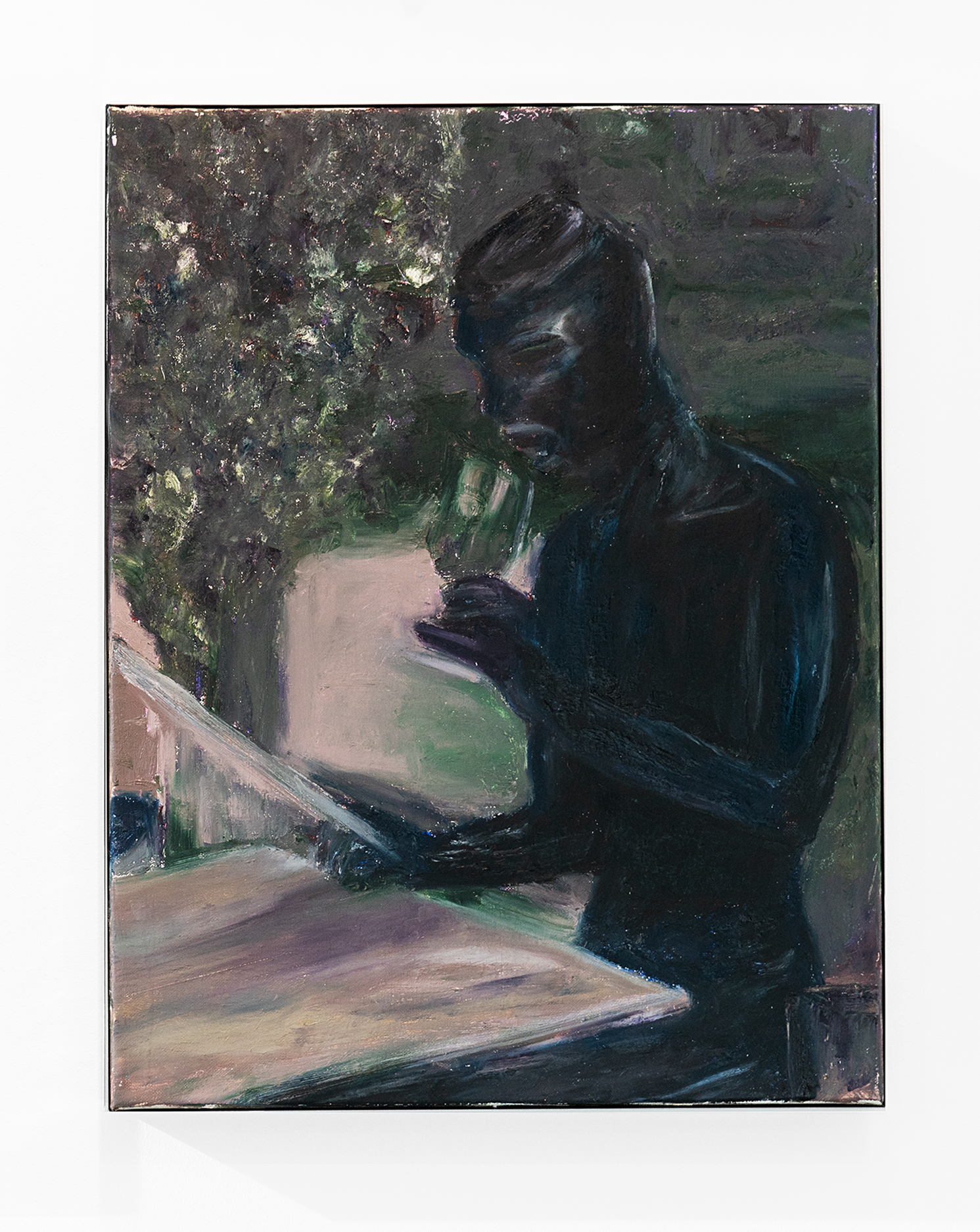
“Dinner for One”, 2021, oil on canvas, 65 x 50 cm

detail of “Dinner For One”
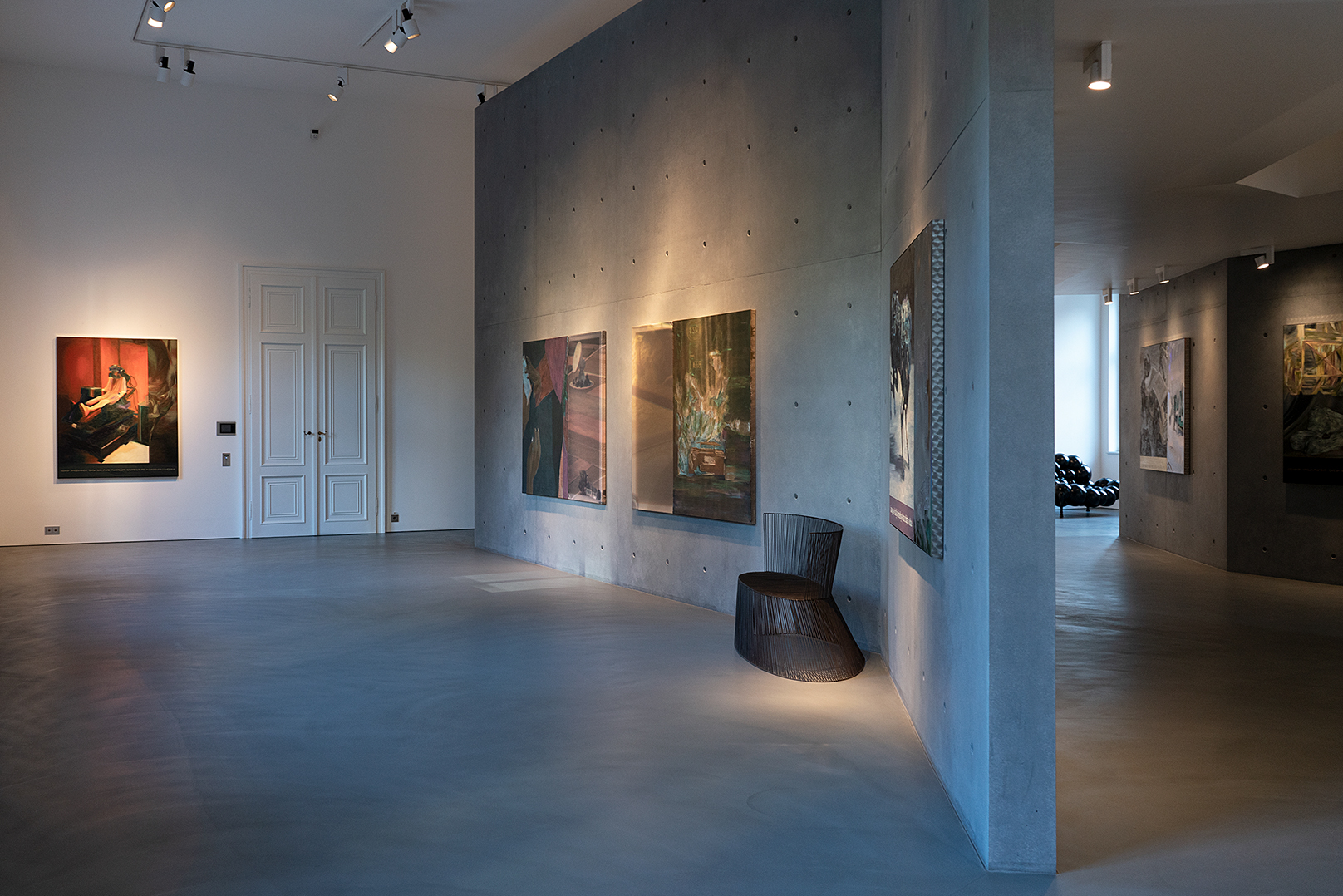
installation view „Wrong Answers Only“ - Palais Rasumofsky Vienna

„Room to Dream“, 2021, oil on canvas, 170 x 140 cm

detail of “Room to Dream”

„Tender Offer“, 2021, oil on canvas, 65 x 50 cm

installation view „Wrong Answers Only“ - Palais Rasumofsky Vienna

installation view „Wrong Answers Only“ - Palais Rasumofsky Vienna
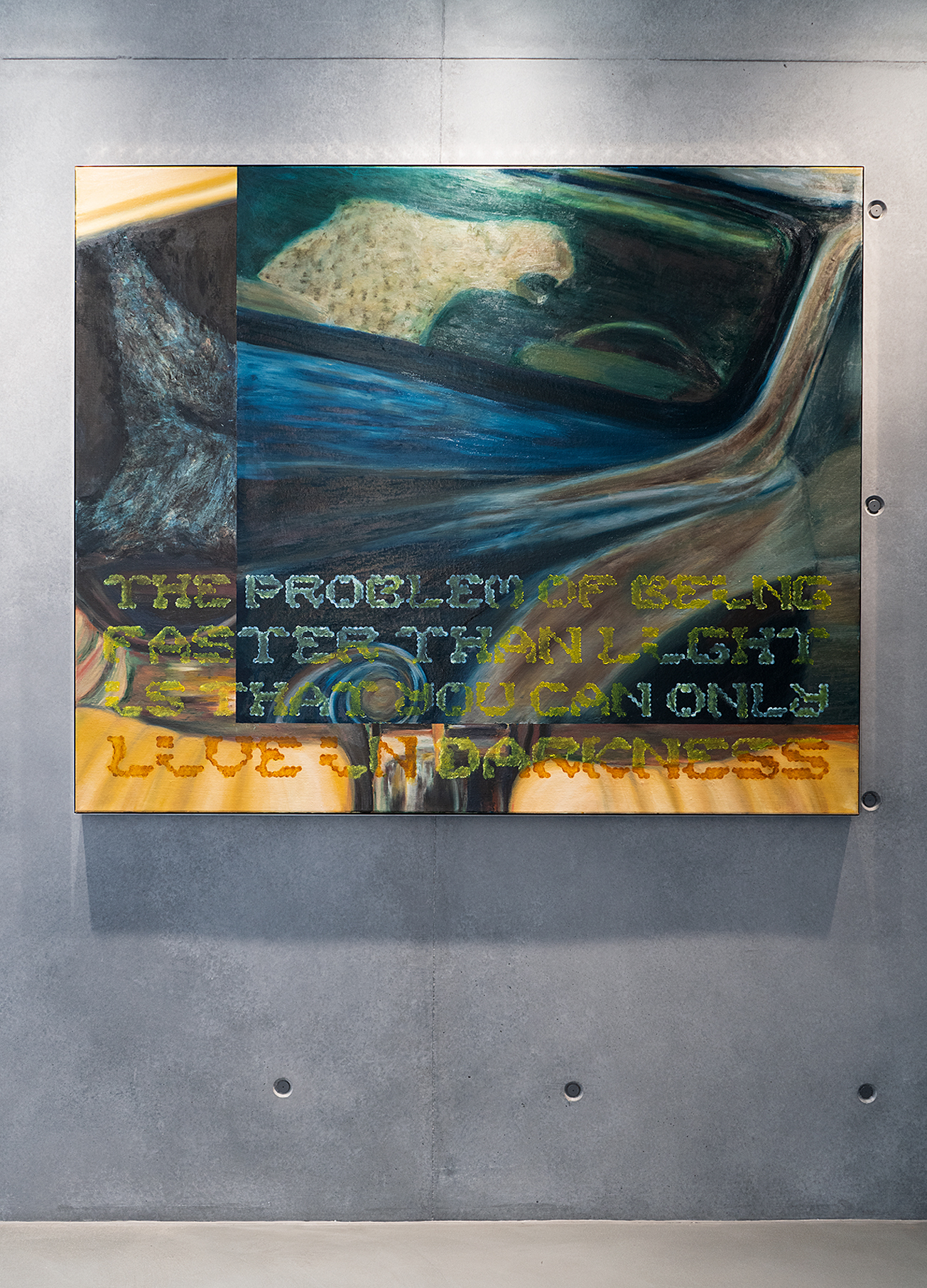
„Godspeed“, 2021, oil on canvas, 140 x 170 cm

detail of “Godspeed”

detail of “Godspeed”

installation view „Wrong Answers Only“ - Palais Rasumofsky Vienna

installation view „Wrong Answers Only“ - Palais Rasumofsky Vienna

„Fahrerflucht“, 2021, oil on canvas, print on pvc, 140 x 170 cm

installation view „Wrong Answers Only“ - Palais Rasumofsky Vienna

„Invest in Each Other“, 2021, oil on canvas, 50 x 65 cm

„Fahrerflucht II“, 2021, oil on canvas, 50 x 65 cm

„Bunny Hop“, 2021, oil on canvas, 50 x 65 cm
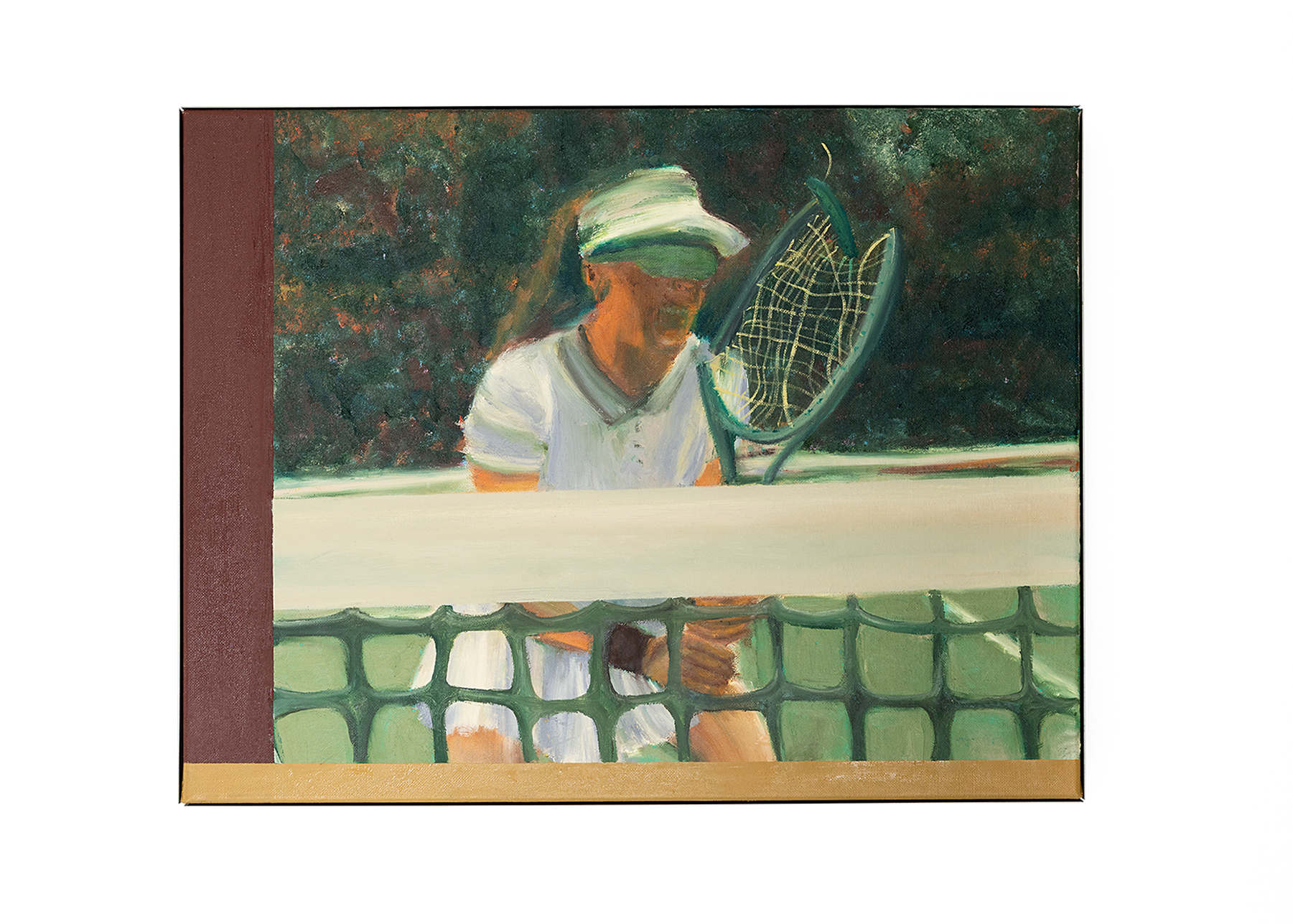
„Matchpoint“, 2021, oil on canvas, 50 x 65 cm

detail of “Matchpoint”
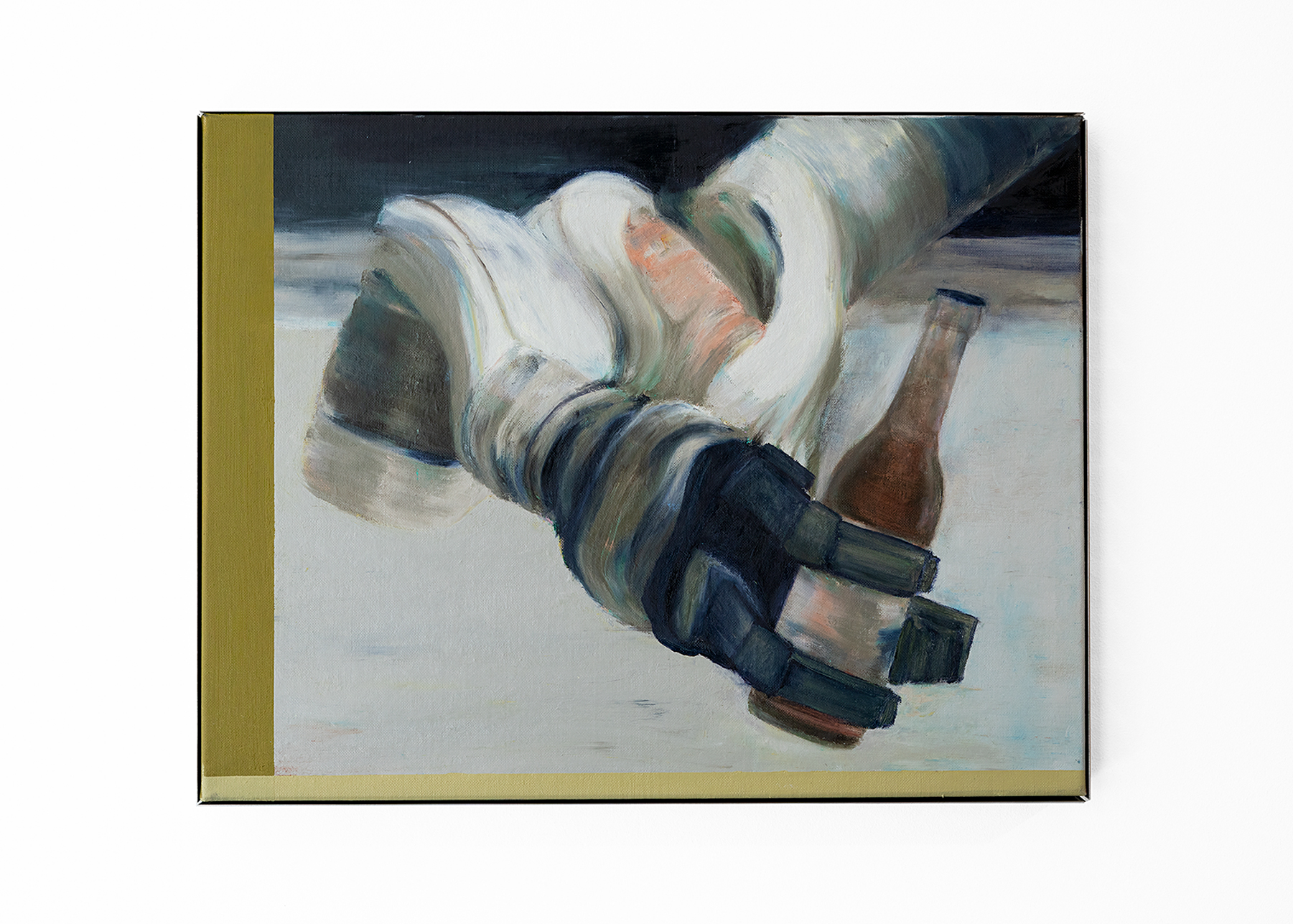
„Another“, 2021, oil on canvas, 50 x 65 cm

„Ganztägig Freier Eintritt“, 2021, oil on canvas, 50 x 65 cm
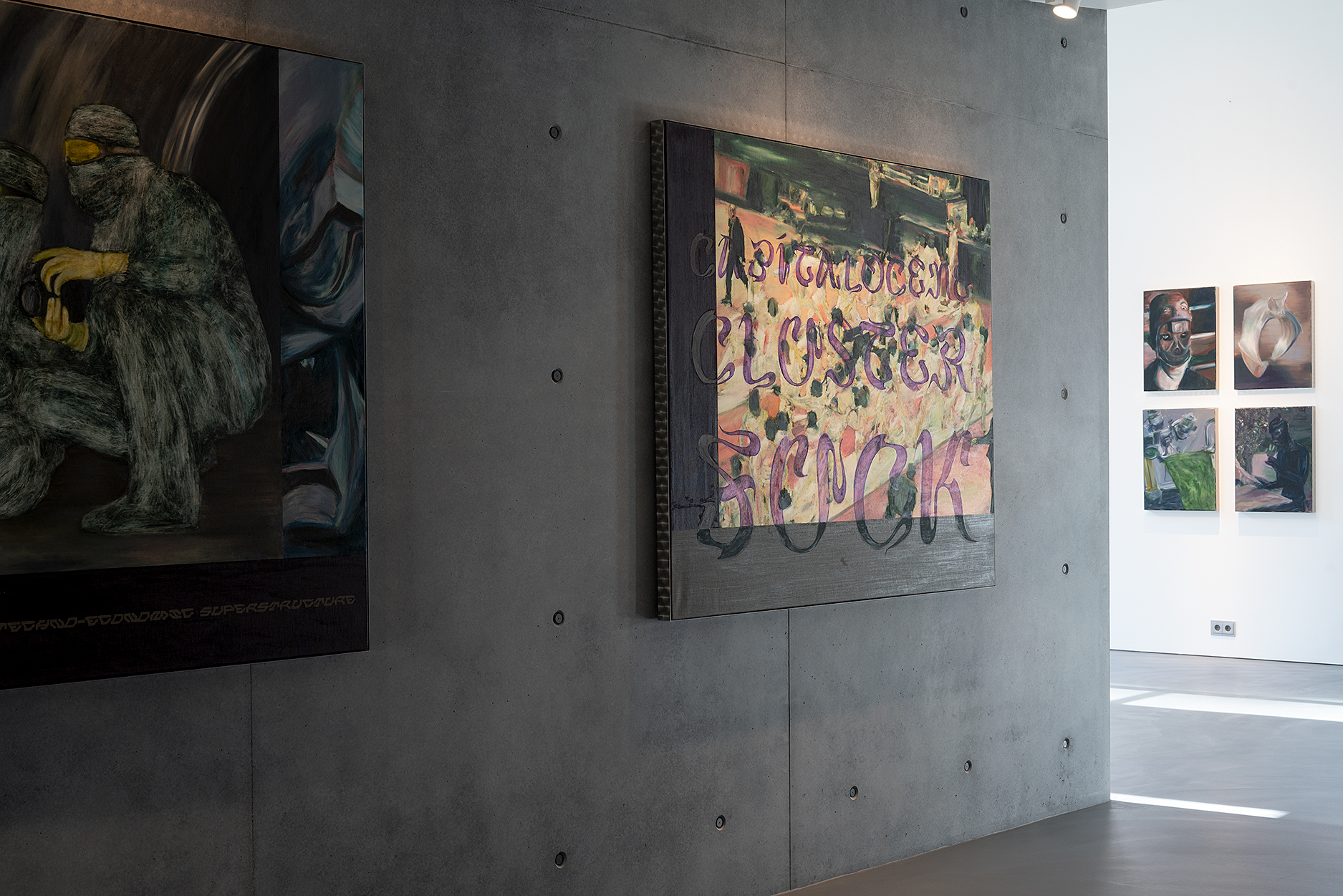
installation view „Wrong Answers Only“ - Palais Rasumofsky Vienna

„Fixing the Superstructure“, 2021, oil on canvas, 140 x 170 cm
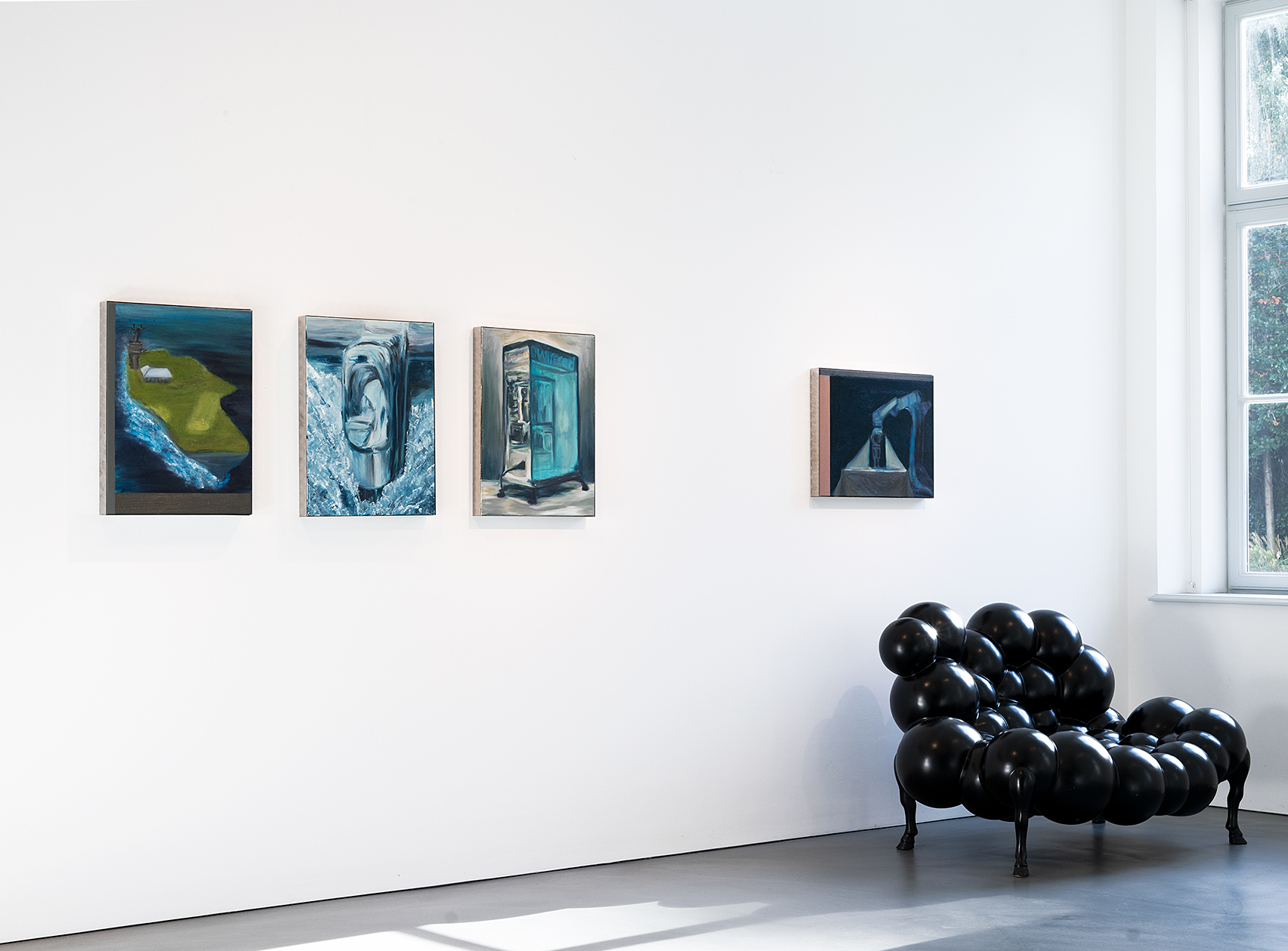
installation view „Wrong Answers Only“ - Palais Rasumofsky Vienna

„Birdie“, 2021, oil on canvas, 65 x 50 cm

„Der See So Tief“, 2021, oil on canvas, 65 x 50 cm

„The Long Lost Wirecard Server“, 2021, oil on canvas, 65 x 50 cm

„Table for Two“, 2021, oil on canvas, 50 x 65 cm

installation view „Wrong Answers Only“ - Palais Rasumofsky Vienna

„Rocket Summer“, 2021, oil on canvas, 65 x 50 cm
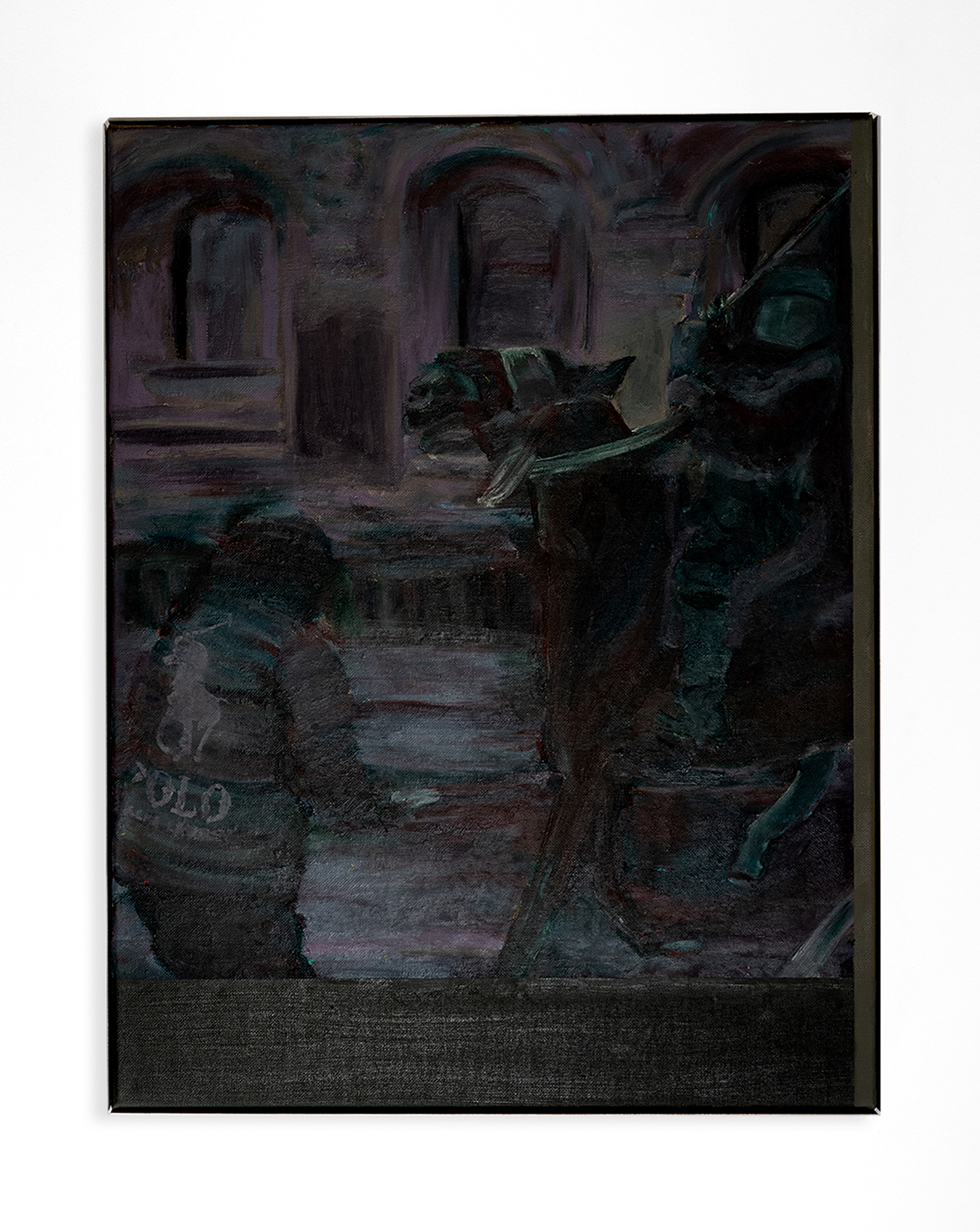
„Lückenlose Aufklärung“, 2021, oil on canvas, 65 x 50 cm

„Take Me Away“, 2021, oil on canvas, 50 x 65 cm

detail of “Take Me Away”
“i
am perpetually haunted by a future that could be”
Andrea Kopranovic, 2021
Der englische Begriff Truism (dt. Gemeinplatz) bezeichnet einen rhetorischen Ausdruck, dessen Inhalt einen mehrheitlichen,
öffentlichen Standpunkt in einer Form präsentiert, die automatisiert und
beinahe sinnentleert erscheint. Es wird eine evidente Tatsache festgehalten,
die der Wahrheit entspricht, aber nur bedingt anfechtbar ist. Truismssind Lückenfüller, Propheten, Scharlatane, Gründe die Augen zu rollen und doch
haftet ihnen im richtigen Kontext etwas Mystisches und Auratisches an. Marc
Henry (geb. 1996 in München) macht sich ihre dunkle Sinnlichkeit zu Nutze und lässt
seine Malerei von diesen Pseudo-Maximen begleiten um ihre düster-melancholische
Physiognomie zu unterstreichen. Er schöpft seine oft ironischen Formulierungen
aus unterschiedlichen Quellen: Manche entstehen in Reminiszenz an seine Anfänge
mit textbasierten Graffitis, andere beschwören quasi-verlorene Webarchive, wie
z.B. vergessene Tumblr Blogs, oder Überbleibsel digitaler Bildproduktion. Die Truisms finden sich an den unteren Bildrändern seiner großformatigen Leinwände, als
wären sie begleitende Untertitel der darüber befindlichen Narrative. Jeder
einzelnen Aussage teilt der Künstler eine eigene Typografie zu und erweckt so
den Eindruck einer Individualisierung und Anpassung der Aussage auf das
jeweilige Bildsujet. Tatsächlich werden wir mit vielfältigen Inhalten
konfrontiert, deren Referenzen aus Pop und Meme Kulturen, bekannten Filmen, den
sozialen Medien oder dem News Cycle stammen. Das Erkennen des zugrundeliegenden
Bezuges garantiert jedoch keine genaue Zuordnung oder eine Lesbarkeit des
Inhalts.
Marc Henry arbeitet mit bewusster
Ambiguität. Seine Arbeiten drücken mit ihren abgedunkelten Farben ein erstes Unbehagen
aus, das nicht kategorisier- oder lokalisierbar sein möchte. Sujet, Inhalt und
Farbe verschmelzen mitunter sogar zu einem Gefühl, das als eeriness erfahrbar
wird – ein unbestimmter emotionaler Topos, der zum Teil an die entrückten
Atmosphären in den Filmen des US-amerikanischen Regisseurs David Lynch denken lässt.
Was den Künstler interessiert, sind subjektive Erfahrbarkeiten, die seine
simulierten Realitäten in vielfältiger Art und Weise aktivieren. Narrative
Übersetzungsarbeit zwischen unterschiedlichen visuellen Medien ist dabei
wesentlicher als die präzise Übersetzung des Inhalts der Arbeiten durch die
Betrachter. Der wiederholte Manipulationsprozess beginnt mit der Auswahl eines
Motivs aus seinem enormen digitalen Archiv, und führt über die Bildbearbeitung
in Photoshop zur Leinwand, zurück zu Photoshop, erneut zur Leinwand, kontinuierlich
in rhythmischer Reziprozität bis eine Form gefunden ist. Es entsteht ein
Pseudonarrativ, das verfälschte Erinnerungen an echte Begebenheiten birgt. Marc
Henry hebt einen Prozess hervor, der Manipulationen eines medialen Wiederkäuens
zur kritischen Methode stilisiert.
Die bisher größte Einzelausstellung
des Künstlers im Wiener Palais Rasumofsky umfasst rund 30 Arbeiten, fast alle
aus diesem Jahr. Der Titel „Wrong Answers Only“ bezieht sich auf ein Spiel in
den sozialen Medien, in dem je ein Bild von Filmcharakteren, berühmten Personen
oder bekannten Objekten gezeigt wird. Verbunden mit der Aufforderung, ausschließlich
alternative Zuschreibungen zum Abgebildeten darunter zu kommentieren, kommt es
zur bewussten Verfälschung im Sinne eines humoristischen Aktes. Auch Marc
Henrys Arbeiten könnte man auf den ersten, oberflächlichen Blick als
schwarzhumorige Ausläufer dieses Phänomens auffassen. Hinter der Fassade erstrahlt
jedoch der dunkle Glanz vieler Abgründe: Technokratische Strukturen, Fragen
nach Macht und Autorität, Maskierungen und techno-organische Twists bezeichnen
ernstzunehmende Auseinandersetzungen mit der digitalen Welt. Ob Roboterarme aus
der Automobilindustrie Champagner einschenken, selbstfahrende Autos
Fahrerflucht begehen, VR-Brillen tragende Figuren einen Blick in die Zukunft
erhaschen, ein Gepard auf dem Beifahrersitz eines dunkelblauen Bentley einen
Autounfall herbeiführt, das Basler Himmelsspektakel von 1566 neu verhandelt,
der verschwundene Wirecard Server gefunden oder Dodgecoin dem Kadaver eines
alten Servertowers zur Seite gestellt wird – Dystopien und Utopien werden in
den Arbeiten von Marc Henry miteinander verwoben. Sie erzeugen einen
kontingenten Möglichkeitsraum, der nichts ausklammert. Wir befinden uns in
ihnen in einer Knautschzone unserer Comfort Zone, einem Ort an dem wir uns
unbeschadet bisher unbekannten Ängsten stellen können und es keine falschen
Antworten gibt.
“i am perpetually haunted by a future that could be”
Andrea Kopranovic, 2021
The English term truism describes the rhetorical expression of a common-sense point of view in a form that appears automated and almost meaningless. An evident fact which corresponds to the truth is recorded in such a way, that it can only be challenged to a limited extent. Truisms are fillers, prophets, charlatans, reasons to roll your eyes and yet, in the right context, there is something mystical and auratic about them. Marc Henry (born 1996 in Munich) makes use of their dark sensuality and lets these pseudo-maxims accompany his paintings thus underlining their own dark and melancholic physiognomy. He draws his often ironic formulations from different sources: Some evolve in reminiscence of his beginnings with text-based graffiti, others conjure up seemingly lost web archives, such as forgotten Tumblr blogs, or remainders of digital image production. The truisms can be found on the lower edges of his large-format canvases, as if they were accompanying subtitles to the narrative above. The artist assigns individual typographies to each statement, creating the impression of individualization and adaptation of the statement to the respective picture subject. In fact, we are confronted with a wide range of content, the references of which come from pop and meme cultures, well-known films, social media or the news cycle. However, recognizing the underlying reference does not guarantee an exact assignment to or legibility of the content.
Marc Henry works consciously with ambiguity. With their darkened colors, his works express an initial discomfort that does not want to be categorized or localized. Subject, content and color sometimes even merge to manifest a feeling that can be experienced as eeriness – an indefinite emotional topos that is partly reminiscent of the remote atmospheres in the films of the American director David Lynch. What interests the artist are subjective experiences that activate his simulated realities in a variety of ways. Narrative translation work between different visual media is more crucial than the precise translation of the content of the work by the viewer. The repeated manipulation process begins with the selection of a motif from his enormous digital archive, is followed by image processing in Photoshop and leads back to the canvas, back to Photoshop, again to the canvas, continuously in rhythmic reciprocity until a form is found. A pseudo-narrative emerges thereby, containing falsified memories of real events. Marc Henry highlights a process that stylizes the manipulation of medial rumination into a critical method.
The artist's largest solo exhibition to date at Palais Rasumofsky in Vienna includes around 30 works, almost all of them from this year. The title "Wrong Answers Only" refers to a game on social media in which a picture of a film character, famous person or known object is shown. Combined with the request to exclusively comment on alternative attributions to what is depicted below, there is a deliberate falsification in the sense of a humorous act. At a first, superficial glance, Marc Henry's work could also be seen as black-humored extensions of this phenomenon. Behind the facade, however, the dark radiance of many abysses shine: Technocratic structures, questions of power and authority, masking and techno-organic twists denote serious debates concerning the digital world. Whether robotic arms as used in the automotive industry pour champagne, self-driving cars commit a hit-and-run, figures wearing VR glasses catch a glimpse of the future, a cheetah in the passenger seat of a dark blue Bentley causes a car accident, the Basel Sky Spectacle of 1566 is renegotiated, the missing Wirecard server is found, or Dodgecoin is placed next to the carcass of an old server tower – dystopias and utopias are interwoven in Marc Henry's work. They open up a contingent space of possibility that does not exclude anything. In them we are in a crumple zone of our comfort zone, a place where we can face previously unknown fears without prejudice and where there are no wrong answers.
Andrea Kopranovic, 2021
Der englische Begriff Truism (dt. Gemeinplatz) bezeichnet einen rhetorischen Ausdruck, dessen Inhalt einen mehrheitlichen, öffentlichen Standpunkt in einer Form präsentiert, die automatisiert und beinahe sinnentleert erscheint. Es wird eine evidente Tatsache festgehalten, die der Wahrheit entspricht, aber nur bedingt anfechtbar ist. Truismssind Lückenfüller, Propheten, Scharlatane, Gründe die Augen zu rollen und doch haftet ihnen im richtigen Kontext etwas Mystisches und Auratisches an. Marc Henry (geb. 1996 in München) macht sich ihre dunkle Sinnlichkeit zu Nutze und lässt seine Malerei von diesen Pseudo-Maximen begleiten um ihre düster-melancholische Physiognomie zu unterstreichen. Er schöpft seine oft ironischen Formulierungen aus unterschiedlichen Quellen: Manche entstehen in Reminiszenz an seine Anfänge mit textbasierten Graffitis, andere beschwören quasi-verlorene Webarchive, wie z.B. vergessene Tumblr Blogs, oder Überbleibsel digitaler Bildproduktion. Die Truisms finden sich an den unteren Bildrändern seiner großformatigen Leinwände, als wären sie begleitende Untertitel der darüber befindlichen Narrative. Jeder einzelnen Aussage teilt der Künstler eine eigene Typografie zu und erweckt so den Eindruck einer Individualisierung und Anpassung der Aussage auf das jeweilige Bildsujet. Tatsächlich werden wir mit vielfältigen Inhalten konfrontiert, deren Referenzen aus Pop und Meme Kulturen, bekannten Filmen, den sozialen Medien oder dem News Cycle stammen. Das Erkennen des zugrundeliegenden Bezuges garantiert jedoch keine genaue Zuordnung oder eine Lesbarkeit des Inhalts.
Marc Henry arbeitet mit bewusster Ambiguität. Seine Arbeiten drücken mit ihren abgedunkelten Farben ein erstes Unbehagen aus, das nicht kategorisier- oder lokalisierbar sein möchte. Sujet, Inhalt und Farbe verschmelzen mitunter sogar zu einem Gefühl, das als eeriness erfahrbar wird – ein unbestimmter emotionaler Topos, der zum Teil an die entrückten Atmosphären in den Filmen des US-amerikanischen Regisseurs David Lynch denken lässt. Was den Künstler interessiert, sind subjektive Erfahrbarkeiten, die seine simulierten Realitäten in vielfältiger Art und Weise aktivieren. Narrative Übersetzungsarbeit zwischen unterschiedlichen visuellen Medien ist dabei wesentlicher als die präzise Übersetzung des Inhalts der Arbeiten durch die Betrachter. Der wiederholte Manipulationsprozess beginnt mit der Auswahl eines Motivs aus seinem enormen digitalen Archiv, und führt über die Bildbearbeitung in Photoshop zur Leinwand, zurück zu Photoshop, erneut zur Leinwand, kontinuierlich in rhythmischer Reziprozität bis eine Form gefunden ist. Es entsteht ein Pseudonarrativ, das verfälschte Erinnerungen an echte Begebenheiten birgt. Marc Henry hebt einen Prozess hervor, der Manipulationen eines medialen Wiederkäuens zur kritischen Methode stilisiert.
Die bisher größte Einzelausstellung des Künstlers im Wiener Palais Rasumofsky umfasst rund 30 Arbeiten, fast alle aus diesem Jahr. Der Titel „Wrong Answers Only“ bezieht sich auf ein Spiel in den sozialen Medien, in dem je ein Bild von Filmcharakteren, berühmten Personen oder bekannten Objekten gezeigt wird. Verbunden mit der Aufforderung, ausschließlich alternative Zuschreibungen zum Abgebildeten darunter zu kommentieren, kommt es zur bewussten Verfälschung im Sinne eines humoristischen Aktes. Auch Marc Henrys Arbeiten könnte man auf den ersten, oberflächlichen Blick als schwarzhumorige Ausläufer dieses Phänomens auffassen. Hinter der Fassade erstrahlt jedoch der dunkle Glanz vieler Abgründe: Technokratische Strukturen, Fragen nach Macht und Autorität, Maskierungen und techno-organische Twists bezeichnen ernstzunehmende Auseinandersetzungen mit der digitalen Welt. Ob Roboterarme aus der Automobilindustrie Champagner einschenken, selbstfahrende Autos Fahrerflucht begehen, VR-Brillen tragende Figuren einen Blick in die Zukunft erhaschen, ein Gepard auf dem Beifahrersitz eines dunkelblauen Bentley einen Autounfall herbeiführt, das Basler Himmelsspektakel von 1566 neu verhandelt, der verschwundene Wirecard Server gefunden oder Dodgecoin dem Kadaver eines alten Servertowers zur Seite gestellt wird – Dystopien und Utopien werden in den Arbeiten von Marc Henry miteinander verwoben. Sie erzeugen einen kontingenten Möglichkeitsraum, der nichts ausklammert. Wir befinden uns in ihnen in einer Knautschzone unserer Comfort Zone, einem Ort an dem wir uns unbeschadet bisher unbekannten Ängsten stellen können und es keine falschen Antworten gibt.